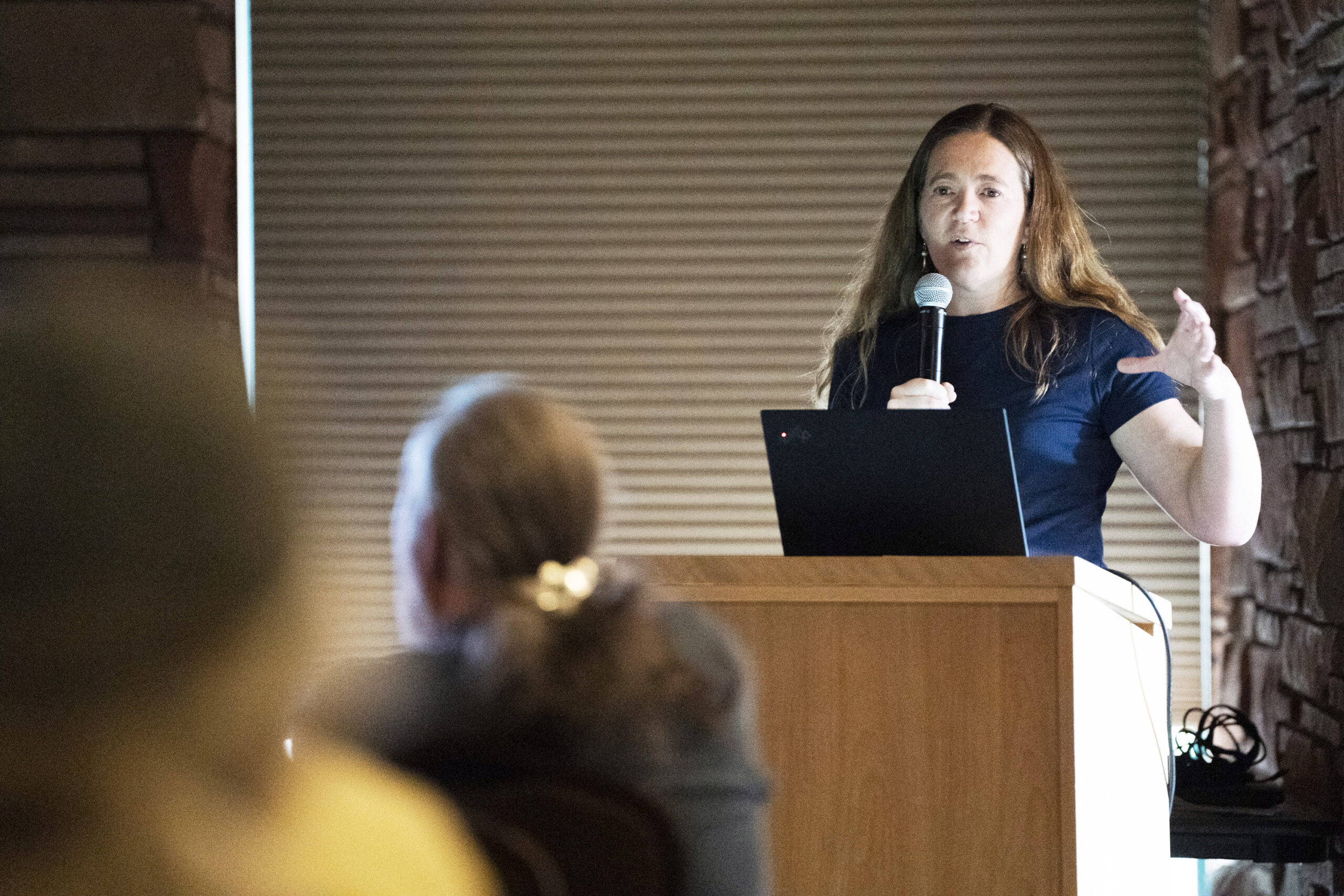The Verde Valley Chapter of the Arizona Archaeology Society closed out its spring meetings at the Sedona Public Library on Thursday, May 18, with a presentation by preservation archaeologist Karen Schollmeyer, Ph.D., of Archaeology Southwest.
Schollmeyer’s talk “The Salado Phenomenon in the U.S. Southwest” closed out the society’s spring meetings; they will resume meeting in September.
Archaeologists have long been puzzled by the origins and disappearance of the Salado people in the Tonto Basin. During the Salado period from roughly A.D. 1300 to 1450, they had a significant influence on other cultural groups across south central Arizona and southwestern New Mexico through their unique pottery designs, known as Salado polychrome, and the spread of their culture across the Southwest, which is commonly referred to as the Salado phenomenon.
“The late 1200s are a rough patch in the Four Corners,” Schollmeyer said. “Power is probably restricted, maybe access to certain resources, and then there’s a drought that’s making these issues worse. It culminates in a lot of social tensions, and people are not happy with the way their social system works, so people say ‘we need to do something different’ and they move away.”
People from the Kayenta area of Arizona started migrating into the Hohokam areas of southern Arizona and the Mogollon region of central New Mexico. They either integrated into existing communities or established new settlements. In spite of their small numbers, the Kayenta immigrants exercised significant social and economic influence.
As these cultures gradually intermixed to form the Salado culture, Schollmeyer argued that an us-versus-them scenario would have developed because of differences in norms and language.
“We can actually see some of this tension down in the San Pedro [River Valley], “ Schollmeyer said. “When Kayenta people first get to this area, they’re sort of spatially separated from everybody else … and one of the things that happens when people are worried about immigration and worried about new people who don’t look and talk like them is people build walls. That happened in the past too.”
While these tensions rarely escalated into acts of group violence, it is evident that locals were nervous about new people coming in and changing the status quo, Schollmeyer said. However, after a relatively short period of archaeological time, one to two generations, the Salado phenomenon emerged from the mixing of the groups. This union was expressed in Salado polychrome pottery through the use of new religious symbols tied to an overarching set of religious beliefs that served as a unifying social force.
“They used a shared ideology, and a shared set of symbols on their pottery to show that they were all members of the same group, even though people within the group might have had different ancestry,” Schollmeyer said. “The religion and symbols that are associated with that religion on the pottery helped reinforce the things that united people.”
Examples include depictions of lighting and clouds or serpents evoking fertility and rain, according to Archaeology Southwest’s website, which adds, “By studying Salado, we seek to understand how people of diverse backgrounds come to think of themselves as one people, while still retaining a sense of their own heritage — just as many Americans celebrate the traditions and homelands of their ancestors.
Through Salado, we can examine how people maintain and transform their traditions and beliefs far from their homelands, across generations or in the face of social and economic challenges. We can also consider what tangible evidence ‘heritage’ leaves.”
The Verde Valley Chapter will reconvene on Thursday, Sept. 28, at 3:30 p.m. at the Sedona Public Library, when they will feature a speaker from Arizona Humanities.



